Description
Name in North American Boletes: Fuscoboletinus larcinus and Fuscoboletinus serotinus
Genus: Suillus
- Genus 2: Fuscoboletinus
- Genus 3: Boletus
Species: elbensis
- Species 2: laricinus
- Species 3: serotinus
- Species 4: viscidus
- Species 5: aeruginascens
Common Name:
Tells: Variable-colored, viscid cap. Stem is buff above the viscid ring, & grayish-brown or buff below. Whitish pores & flesh may DNS but usually goes a slow blue that ages through purplish to reddish brown.
Other Information: Pores age grayish toward red/brown when old. A special tell: Wrap a specimen in wax paper & after a few minutes the paper will turn blue. Grows only under larch, but common there. Cap & stem colors vary from greenish- to yellowish- to reddish- to brownish-gray. Cap may crack in really dry weather. Often has a pungent odor.
Science Notes: DNA testing eliminated the genus Fuscoboletinus and moved all its members to Suillus except for paluster, which has been placed (probably for just the moment) in Boletus. Further testing has merged the North American version formerly known by two European names (laricinus and serotinus).
Edibility: Good.
CHEMICAL TESTS:
- NH4OH (Ammonia): Cap flesh turns reddish brown.
- KOH: No data.
- FeSO4 (Iron Salts): Flesh turns green.
Links:
 |
0 |  |
0 |  |
177 |  |
349 |

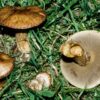
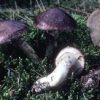


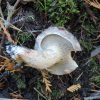
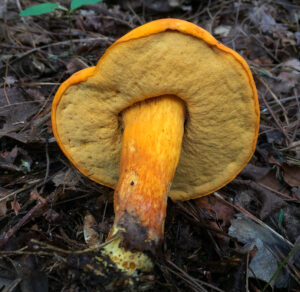
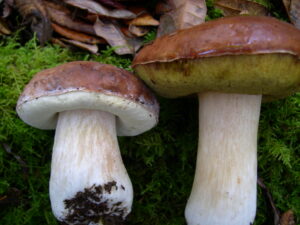

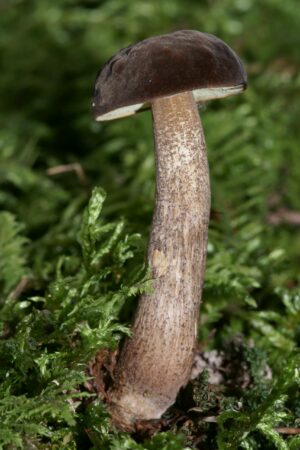
Got something to discuss?